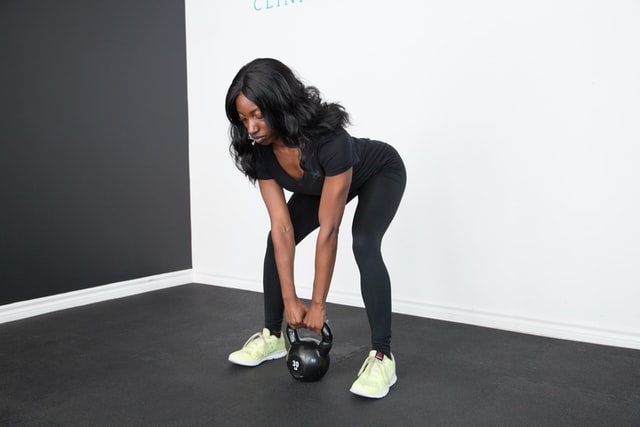Squats are in general a great exercise as they target so many muscles. In pregnancy, they are great to help maintaining strength and range of motion in the glutes, hips, core and of most importance the pelvic floor. This is why they are also great for the postnatal period too. They help to strengthen the pelvic floor muscles without using exercises that might cause doming and put pressure on the rectus abdominis.
How to perform a squat
If you were performing squats with weights prior to being pregnant, there is no reason why you can’t continue doing this if your pregnancy is normal. As always, check you are safe to exercise before continuing. If you were using a bar for weights before being pregnant, you may want to change to using dumbbells or kettlebells by your sides to avoid putting excess pressure on your spine. As your pregnancy progresses, you may want to decrease the weight or go to body weight squats.
- Stand with feet about shoulder width apart
- If using weights, hold them at your side. If your not using weights, you may want to hold your arms out in front for balance.
- You then want to start lowering yourself by pushing your bum backwards and driving down.
- Keep your back straight
- Keep the weight in your heels
- You want to make sure your knees are either behind or in line with your toes
- Only lower yourself to where you feel comfortable
- Once at the bottom of the squat, hold for a second and then drive back to standing by squeezing the glutes
Sumo Squats
A variation of the squat is known as a sumo squat. These squats will target your inner thigh muscles more and different parts of your glutes. It also helps to open up the hips.
- With these squats, you want to place your feet slightly wider than shoulder width apart
- Turn the toes out slightly and keep the knees tracking in line with the toes
- Lower down into the squat position as previous
- You want to make sure that your legs stay turned out throughout the whole movement. Make sure that your knees do not cave in towards each other. If they start too, then come up a bit to a place where they don’t cave in.
- Return to standing by squeezing the glutes and driving upwards
Perform 3 sets, 12 repetitions of whichever squat option you choose or both!
Other things to note
Throughout pregnancy, you start to release a hormone called relaxin which softens your joints and makes them more flexible. As with all exercises, make sure you don’t strain yourself by stretching too far. Stay within your normal range of movement.
As pregnancy progresses, you may find you need to hold onto something when performing the squat. Better yet, you can use an exercise ball placed against the wall and squat with this as support. Or place a chair behind you and squat down as if you were going to sit on the chair. As your bum glances the chair, drive back up to standing.
To work on the pelvic floor muscles, you can hold a deep squat position and contract those pelvic floor muscles, holding for 10 seconds. Return to standing and repeat 4 more times.
In the postnatal period, when you start with squats again, you may want to start without a weight or a light weight to begin with and make sure you get the correct exercise form.
Conclusion
This is a great exercise to perform throughout pregnancy and into the postnatal period. It helps to strengthen a lot of muscles that may start to weaken as pregnancy progresses. It is also great for making sure you maintain good posture when performed correctly. Adjust the weight as necessary and use aids when needed if you find your balance starting to go.
Add those kegel exercises in at the bottom of the squat for extra strengthening, enjoy and happy exercising.




